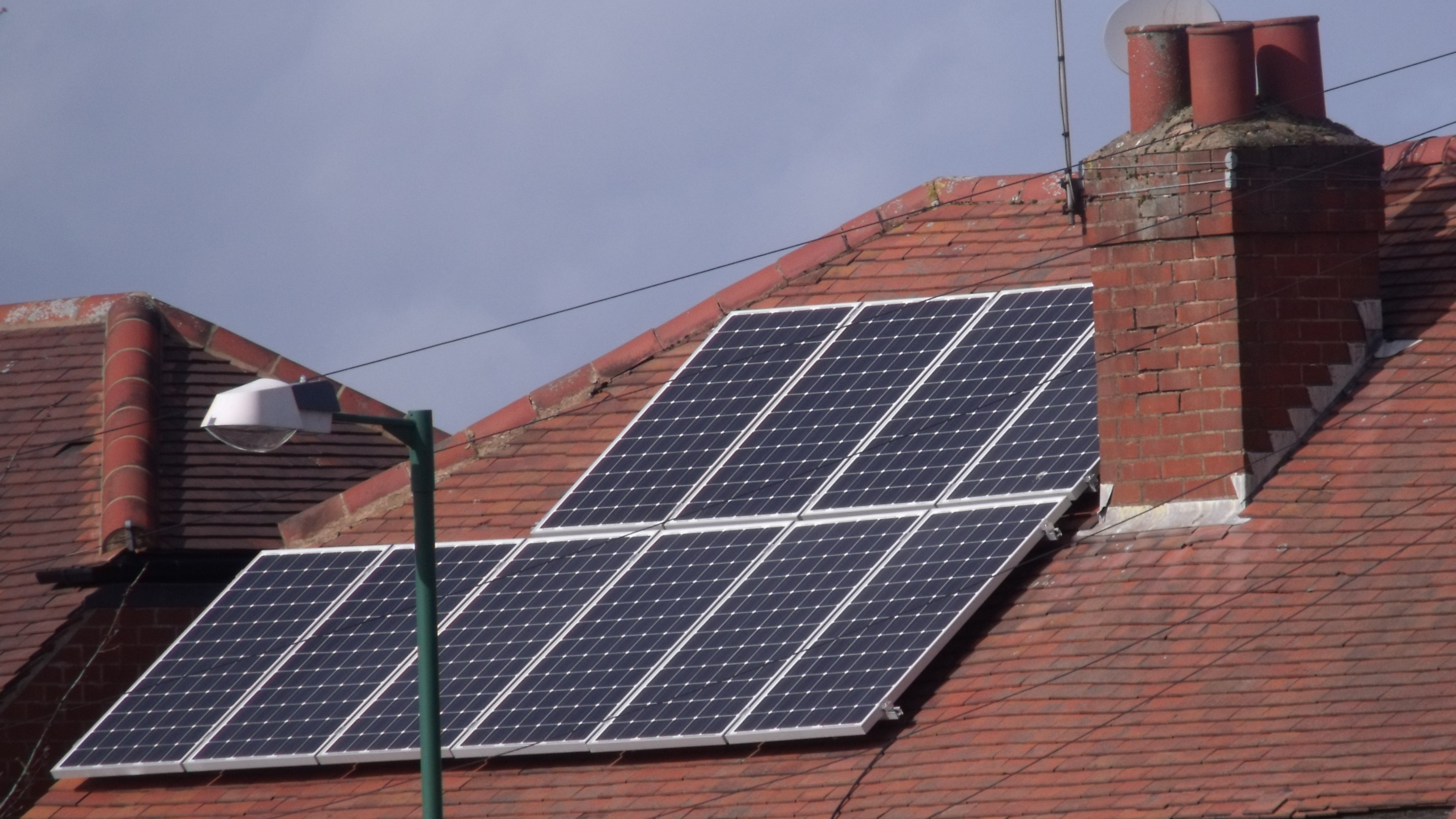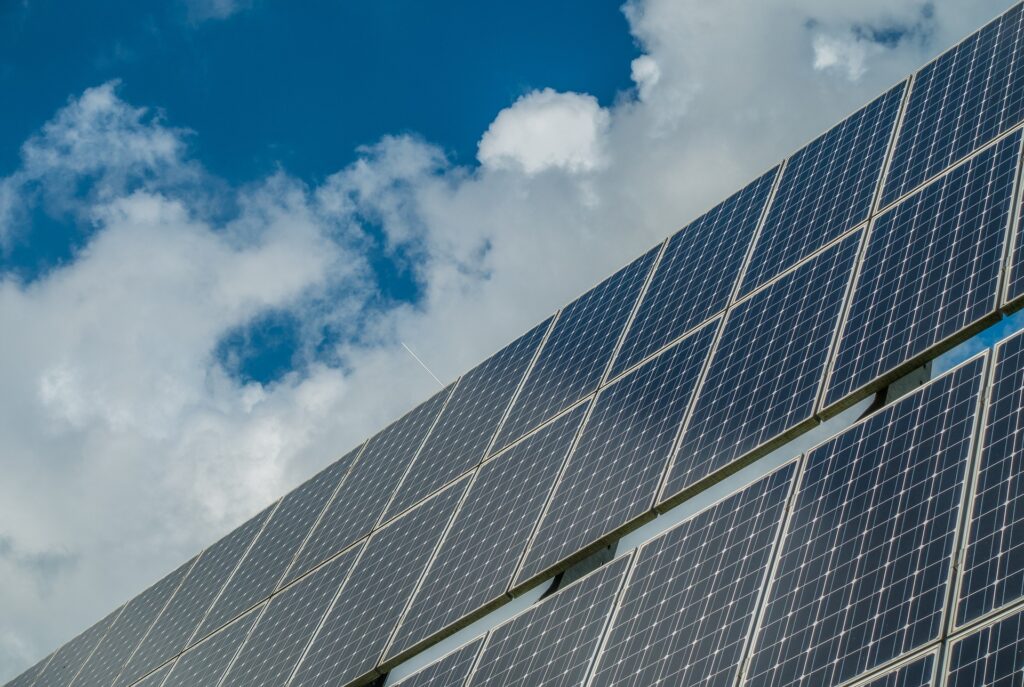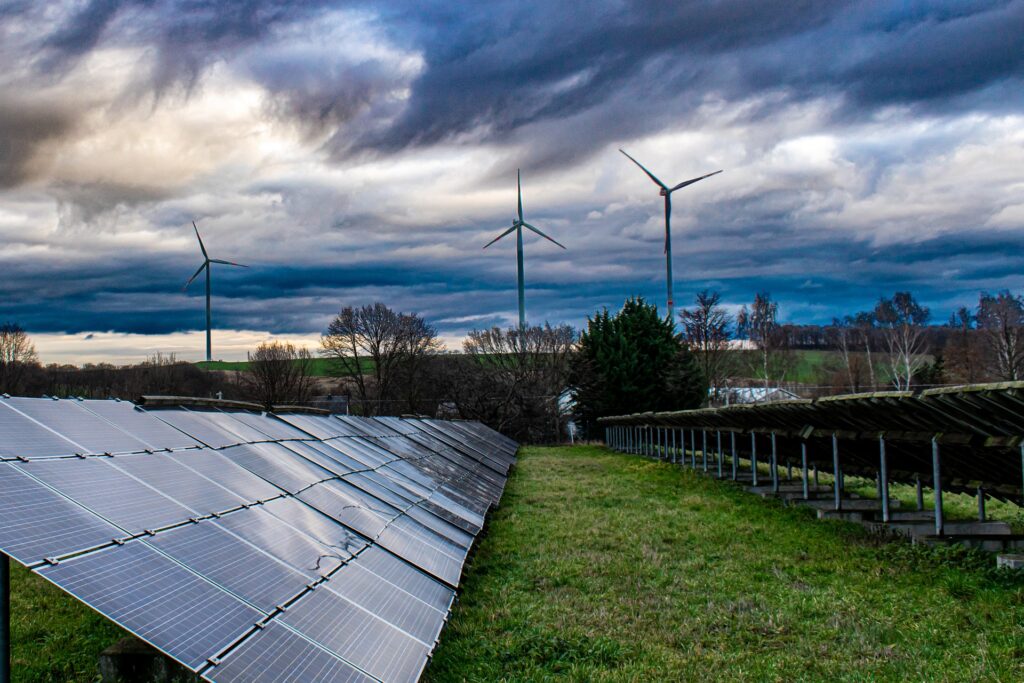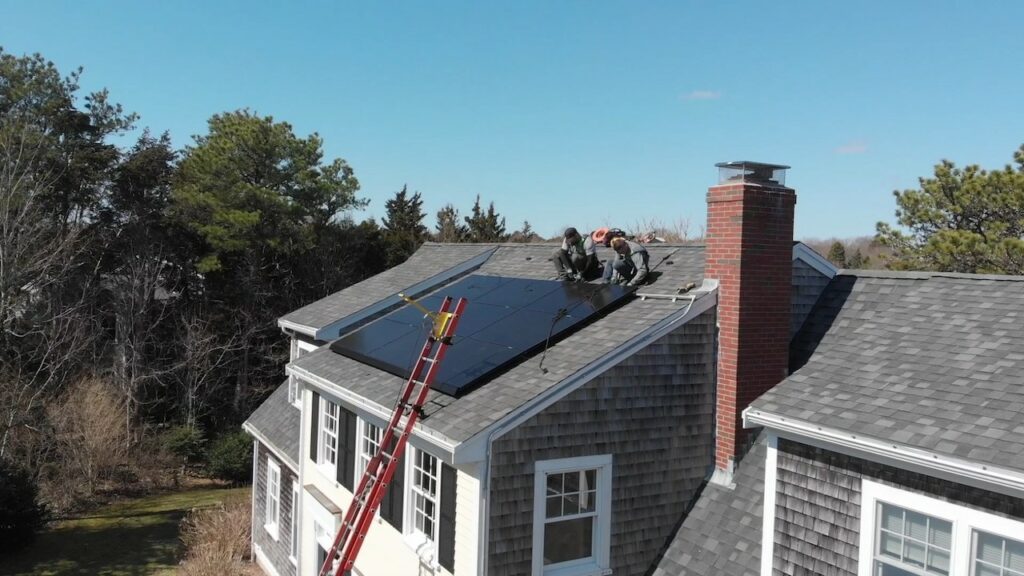
Have you been sitting on the fence about whether you should take the plunge into purchasing a rooftop or ground mount solar system for your home? Maybe you’re going back and forth on this burning question.
Really, when it comes right down to it, the basic question is: Are solar panels worth it?
Both positive and negative answers to that question ignore a third possibility.
Also read: 7 best RV solar panels and kits with complete buyer’s guide (2021)
Whether solar panels are worth it or not depends on your unique situation. Photovoltaic (PV) modules could be worth it for you, but maybe they’re not, given your current circumstances.
Alternatively, solar panels may not be a good fit for you right now, but could be at some future time.
In other words, in answering the question, Are solar panels worth it? the answer could be: Maybe. It depends.
This article will help you make the best decision for you about whether investing in solar panels is worth it or not. To break down the issue into all its relevant pieces, and explore all the angles, here are:
- Pros and cons of owning a home solar system
- Return on investment (ROI) analysis for solar panels
- Leasing alternatives for a home solar array
- Community solar options for individuals
After careful consideration of all the facts, options, and perspectives presented here, you’ll be better placed to answer the key question investigated in this piece: Are solar panels worth it for YOU?
Also read: 7 tips on how to clean solar panels the right way
Top 10 pros and cons of solar panels
Just like most major decisions, there are benefits and drawbacks to weigh against each other. Determining whether solar panels are worth it is no exception. To make the process easier, here is a table listing the top 10 pros and cons of residential rooftop or ground mount solar arrays.
Which advantages and disadvantages of solar panels matter the most to you? Following the table is a list of thought-provoking questions based on the positives and negatives presented here to guide your assessment of whether solar panels are worth it to you right now.
| Pros of Solar Panels | Cons of Solar Panels |
| Save on electric bills | High upfront cost |
| Receive energy credits (net metering) | Orientation/angle may not be ideal for your roof/property |
| SRECs (not in all states) | May be unacceptable by some homeowner associations (HOAs) |
| Federal tax credits | Payback period could be too long |
| State tax credits | Possible vandalism/theft in some areas |
| Increase property value | Power output drops over time |
| Help curb our climate crisis | Energy production lower in hot climates or overcast areas |
| Create clean energy jobs | Manufacturing is fossil fuel energy intensive |
| No or low maintenance | Recycling panels is difficult |
| Prolong the life of your roof | Mining for minerals is environmentally destructive, commits human rights violations |
Table of Contents
Pros and cons of solar: thought questions
Designed to help you make up your mind about whether solar panels are right for you, here are some questions to think about. Hope they result in some enlightening dinner table discussion at your home!
- Do the cons of going solar outweigh all the many energy cost savings that a solar array brings?
- Do I need to have the “ideal” orientation and angle for solar modules, or will I feel cheated out of maximum energy output if I don’t?
- Am I prepared to take on my HOA if they disapprove of my home solar installation plan?
- Would I ever consider leasing solar panels or participating in a local community solar program to support renewable energy, knowing that I will not reap all the economic rewards of owning my own home solar array?
- Am I prepared to pay to replace my roof now, even though it still has some life in it, or be willing to absorb the added expense of removing the panels at some later time after the solar installation then reinstalling the solar array when it’s absolutely necessary to replace my roof?

Solar panel return on investment (ROI) analysis
If money is a concern for you when undertaking a major home improvement project like solar panels, you definitely want to run the numbers first with a return on investment (ROI) analysis before signing on the dotted line.
Note that solar companies worth their weight will offer you bids on the project and will present their own ROI. They want to prove to you how long it will take to recoup all of your initial outlay (the payback period) and begin making money on your home solar system.
Consumer tip: While it’s helpful to review and judge the company ROIs against each other, be sure to do your own analysis, too. Remember that their bottom line is to turn a profit while yours is to save money and begin to make money as soon as possible by shortening the payback period.
There are many assumptions that online calculators and company algorithms make when calculating how long it will take before your solar system will begin to make you money after you get all your initial investment back. When you receive bids from companies, be sure to ask them about how they calculated the numbers they used for:
- Your home’s energy usage
- The cost of electricity in your area
- The amount of full, direct sun your panels receive each day of the year (insolation)
- All the reasons your panels produce less than the maximum amount of energy on a daily, seasonal, and annual basis
When it comes to solar panels, advanced ROI techniques use projections for each day, season, or year over the entire lifespan of your array. Standard methods may rely on a fixed number for each variable.
All of these factors — plus others — figure into an ROI calculation. Of course, the ideal ROI analysis will take all of them into consideration and incorporate how they change over time.
Also read: The 7 best flexible solar panels: Reviews and buyer’s guide (2021)
Home energy usage in ROI for solar panels
To determine how much you pay for the energy you consume, you can look at previous electric bills. This value is given in cents/kWh (kilowatt hours).
Add up the bills for a full year and divide by 12 to find the monthly average of what you pay for electricity. If your home runs on other energy sources for heating or cooling, add in whatever you pay for that in one year, too.
Charges for methane gas may appear on your electric bill. Propane gas or heating oil may be on separate bills.
Note: ROIs usually do not count the non-electric sources of energy as part of your total home energy usage. Since they represent a significant outlay for energy, it makes sense to include them even if you haven’t yet switched to all-electric heating and cooling. This way, you’ll see how solar panels offset total energy consumption.
If you choose to include only home electricity usage in your payback calculation, you can simply add up the kilowatt hours you consume in a year by looking at all the bills in a 12-month period.
This value is needed to properly size your solar system — in other words, determine how many panels you need. Then you’ll be able to substitute for grid-supplied electricity with solar energy and meet your household energy demand.

Cost of electricity in ROI for solar panels
You can refer to your energy bills for the cost of electricity in your area. It likely fluctuates during the year. There may be summer and winter rates.
Alternatively, you can check out the tables on the Energy Information Agency (EIA) website. There you will find monthly rates for your state.
Using monthly values along with monthly electricity bills will be more precise than taking an average for the entire year. Solar companies may perform these calculations differently. So, don’t expect the same results.
Also read: How long do solar panels last?
Solar insolation values used in ROI for solar panels
How much sun your home solar modules receive (insolation) largely determines how much energy output your solar array is capable of producing. Many other factors play a role such as tilt angle and orientation.
The National Renewable Energy Laboratory (NREL) publishes monthly averages of insolation for the United States. These measurements are given in kWh/m2/day. The average amount for the continental United States is approximately 5 kWh/m2/day.
Since the precise amount of sun your area receives on a daily basis changes due to weather fluctuations, and your electricity rates vary, doing calculations on a monthly basis is more precise than an annual ROI calculation would be. Yet be aware that both are still approximations of a dynamic process that can’t be completely predicted.
Reasons solar panels produce less than the maximum amount of energy on a daily, seasonal, and annual basis
There are many reasons why solar panels yield less electrical energy than they are rated for. An ROI should take these reasons into account.
Some of these reasons include:
- Panel efficiency is low
- Snow, dark clouds, dust storms, shading or obstructions on the panels prevent sun from reaching the solar cells
- Hot weather (high temperature resistance)
- Non-ideal angle and orientation
- Module degradation
Sample ROI calculation for solar panels
The cost of a home solar installation varies around the country. It’s also dropping fast. For purposes of illustration, we will use easy, whole, average numbers to facilitate the math.
Also, we’ll stipulate that we’re talking about a 5 kW (=5,000W) system that costs $3/watt (all included, before incentives and rebates). This is a typical size of an array to meet all or most of the energy demands for average American families. The price per watt is also a presupposed average.
This means the initial cost of solar installation was 5,000W x $3/watt = $15,000.
That 5 kW system covers approximately 25 m2 on your roof. (Of course, this depends on panel size, but it’s an average.)
We’ll suppose your location receives an insolation of 5 kWh/m2/day.
This amounts to 25 m2 x 5 kWh/m2/day = 125 kWh/day of energy (in DC current) that your solar array could produce if it were 100% efficient and arranged perfectly perpendicular in relation to the sun every hour that the ball of fire moves across the sky.
But it’s not 100% efficient, nor is it perfectly situated with respect to the sun all the time.
Let’s presume your PV modules have a 20% efficiency. This is about the best efficiency on the market today. So, on a given day, they put out merely 125 kWh x 0.20 = 25 kWh/day.
But this supposes the sun is shining brightly every day, which it isn’t.
We’ll stipulate that 10% of the time in a given year, there’s snow, shading, obstruction like leaves or balls, heavy clouds, or pollution that hinders energy production. This brings down the 25 kWh/day even more. 25 kWh/day x 0.90 = 22.5 kWh/day. We round up to 23 kWh/day.
Also read: How do solar panels work? An in-depth explanation anyone can follow
The DC electricity produced by the panels gets transformed into AC current by a solar inverter. This is not a 100% efficient process. Let’s say another 10% is lost. 22.5 kWh/day x 0.90 = 20.25 kWh/day, rounded down to 20 kWh/day.
In one year, your solar system will produce 20.25 kWh/day x 365 days = 7,391.25 kWh/yr., rounded down to 7,391 kWh/yr.
However, solar panels degrade over time. Let’s assume that the panels have a degradation rate of 0.5% per year. This means that after 20 years, the modules produce approximately 90% of the electricity they produced in their first year.
Taking an average of the estimated energy production in years 1 and 20 results in 7,391.25 kWh + 6,652.13 kWh / 2 = 7,021.69 kWh/year, rounded up to 7,022 kWh/yr.
Finally, to calculate the monetary value of the AC electricity cranked out by your solar array in an average year of its stipulated 20-year lifespan (assumed to make the math easier; warranties usually go for 25 years), we’ll estimate utility grid electricity to be $0.20/kWh.
Multiplying 7,022 kWh by 0.20, we get $1,404.40/yr saved on your electricity bill.
Now, we have enough information to calculate the ROI of your solar panels.
ROI = money earned / money invested = $1,404/$15,000 = 9.36%.
That’s a mighty good ROI!
To figure out when you will break even (payback period), it’s inaccurate to divide the 15K you put into the panels initially by the cost of electricity saved per year ($1,404).
You need to figure in any tax incentives or rebates, company discounts, and SRECs (if you’ll earn them).
Also read: What is the best angle for solar panels?
The federal tax credit is now 26%. So that’s $15,000 x 0.26 = $3,900. Your state may pay you $1,000 for a solar installation. Let’s suppose a solar company that wants your business will give you a 5% discount (= $750).
So, subtract the sum of $3,900 + $1,000 + $750 = $5,650 from the initial $15K price tag: $15,000 – $5,650 = $9,350. When all is said and done, that latter figure is what your initial cost is. (SRECs would reduce it even more.)
Then redo the ROI calculation using the adjusted initial cost: $1,404 / $9,350 = 15%!
Any business person would jump right on an investment opportunity in solar panels in a heartbeat when there’s a 15% ROI.
This means in $9,350 / $1,404 = 6.66 years, your home solar panels will begin making money for you.
Most solar panels sold today will continue to produce electricity at 80+% efficiency until at least year 25, likely more than that. Meanwhile, you pocket the extra cash. Sweet deal. 🙂
This comprehensive ROI sample calculation proves without a doubt that solar panels can most definitely be worth it.

Leasing alternatives for home solar panels
As you’re trying to decide whether solar panels are worth it or not, have you considered leasing the modules? This may work for people who cannot afford a home solar installation with cash down or those who don’t qualify for a loan.
Financial advisors say that if your credit score is at least 660, you will likely qualify for a solar loan. If you do, buying a residential solar system is in your best interest because you’ll reap all the tax benefits. Those who rent solar systems don’t get any price reduction.
What solar renters get is a functional solar array for no or little money down. Usually, you’ll save on your electric bill although energy output is not guaranteed. The solar company is responsible for maintenance and repairs, at least in theory.
Solar leasing contracts usually last for 15-20 years, at which time you may opt to extend your lease, buy the solar system often at a discount, or end the agreement.
Another option similar to leasing is a power purchase agreement (PPA).
Also read: 7 best portable solar panels for off-grid adventures
What is unique about a PPA compared to a solar leasing contract is that you pay a fixed price for the electricity generated by the array. This way, you’re buffered from incremental increases in electricity rates that public utilities are famous for.
Both solar leasing and PPAs are becoming viable options for many, especially in states like California that have already mandated solar arrays on all new single- and multi-family housing (up to three stories high) projects, and will be extending the mandate to new commercial buildings and more family housing in 2023.
To be honest, there are several drawbacks to both solar leasing contracts and PPAs. Neither add value to homes. And both add an extra complication to selling your property, because buyers must accept the contract rollover as is. That is, assuming they’d even qualify for a solar lease or PPA.
As a homeowner, you have no say in how large the solar array is or where it’s positioned on your roof, either.
To conclude, leasing solar panels or signing a PPA may not make solar panels really worth it for you. To benefit fully from solar panels and make them worth it, buying or financing a home solar system is your best bet.
Community solar options for individuals
If you really want to invest in solar panels because you believe they’re worth it as a clean and reliable renewable energy source that’s becoming cheaper all the time, have you thought about joining a community solar (CS) group?
The goal of these programs is to make solar energy accessible to everyone, no matter their socioeconomic status or income level.
CS is also perfect for people who cannot install rooftop solar panels because they live in apartments or rented homes, or in a city where they lack the space.
Presently, 41 states and Washington, D.C. have at least one community solar project with many more in the planning stages. Check out this database to find out if you’re close enough to a CS project to become a member.
As a subscriber, you purchase a share of the electric capacity of the CS installation. Every month on your electric bill you receive a credit for your solar energy share. In this way, you get the benefit of energy savings without having a solar array at your home.
Community solar is not like a solar farm where a commercial solar installation operates on a property owned by a developer or business. By contrast, CS usually runs on a property leased specifically for a community solar project.
Some of the advantages of being a member of a community solar project include:
- Savings up to 15%
- Contract for continued savings up to 20 years
- Ability to cancel at any time
So, if for any reason investing in your own home solar array isn’t feasible right now, community solar may be the way to make solar panels worth it for the time being.

The bottom line on if solar panels are worth it
There’s no need to obsess over whether solar panels are worth it or not. Just work through the main sections of this article that are designed to serve as sounding boards for your thoughts. They’ll help you answer the question: Are solar panels worth it?
This article presents the top 10 pros and cons of solar panels, complete with links for more information. This education is complemented by a series of thought questions engineered to get you thinking about the ramifications and possible issues that homeowners may face when embarking on a home solar investment.
Next, there’s a lengthy and comprehensive return on investment (ROI) calculation that’s realistic and totally spelled out, step by step. It’s a good idea to do the math yourself in your own case to prove whether solar panels are worth it for you right now.
Also read: 9 best solar panels for your home – October 2021
The ROI discussion will also allow you to assess the bids from solar companies eager for your business. At least you’ll have a better sense of the types of questions to ask before you swipe your credit card or write a check for a large lump sum of money.
Thirdly, we turn to leasing options for solar panels. This may be how solar panels can be worth it to you now if you can’t afford the initial upfront cost but still wish to support the renewable energy transition away from fossil fuel by putting money where your mouth is. The option to buy the solar panels at a discounted rate after the lease expires may be perfect for you.
Lastly, you’ll find a section on community solar. You’ll have the chance to be a part of something bigger than yourself while enjoying sustainable energy. If you go this route, solar panels will be worth it to you acting as an eco-conscious community member.
Whichever way you get to home solar energy, you’ll discover that solar panels can definitely be worth it.